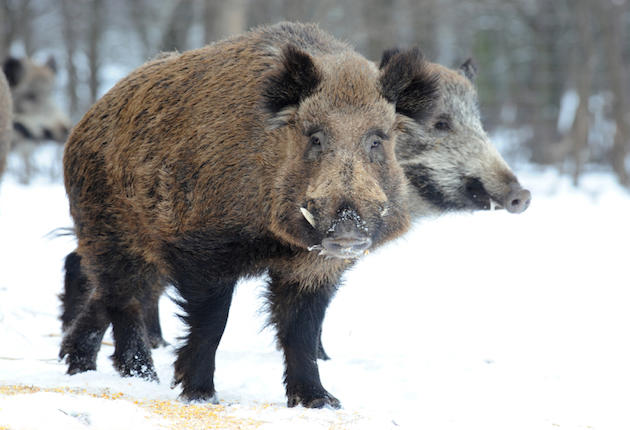“Radioactive Boars on Rampage in Nuclear Disaster Site” sounds like the headline to a National Enquirer article. In fact, it’s the headline to a story by the International Business Times detailing how wild hogs are booming after Japan’s Fukushima Daiichi disaster in 2011. Since the evacuation of the power plant and its surrounding area five years ago, hogs have seen a 330 percent increase in their numbers — bringing with it an inestimable amount of destruction to private property and crops.
Wild hogs were once considered a delicacy by those living around Fukushima, but since the earthquake, tsunami, and resulting core meltdowns of March 11, 2011, the pigs have been flooded with radiation from living inside the so-called “exclusion zone” around the plant. The Japanese government puts the amount of radiation in the environment at 300 times higher than is safe for humans.
With humans gone the hogs are able to move into abandoned houses and use them as shelter. The already prolific breeders are taking advantage of the structures to raise their young. But even with the abandoned areas all to themselves, the hogs often range outside the zone and into the farms and yards of uncontaminated areas, rooting as hogs are apt to do. They have even injured pedestrians as their paths cross.
Now when the hogs are killed it’s with containment in mind. Six mass graves, each holding 600 pigs, have been dug near the city of Nihonmatsu, each filled to the brim. Locals are reduced to using their gardens as disposal sites for the hogs, exacerbating the problem by the radioactive material leaching out into potential food sources.
The city of Soma is using a high-tech cremation device to burn the bodies and capture the resulting radioactive material, but the machine is only capable of handling three pigs a day. Hunters killed 13,000 hogs since 2014 alone.
Wild hogs aren’t the only animals taking advantage of mankind’s nuclear folly. Raccoons are reportedly living alongside the hogs in the contaminated areas. Elsewhere, reindeer are eating the lichen around Chernobyl. The moss-like organisms soak up radiation from the atmosphere, delivering it to the European caribou with each mouthful.
While the larger mammals around each disaster site are still “healthy,” smaller animals and some plants are already showing signs of mutation from the radiation. With the 30th anniversary of Chernobyl coming up April 26 and Fukushima’s clean-up efforts still underway, the animals around the disasters will continue to soak up radiation as they live in the abandoned areas.


I think this is where the new hogzilla movie starts.